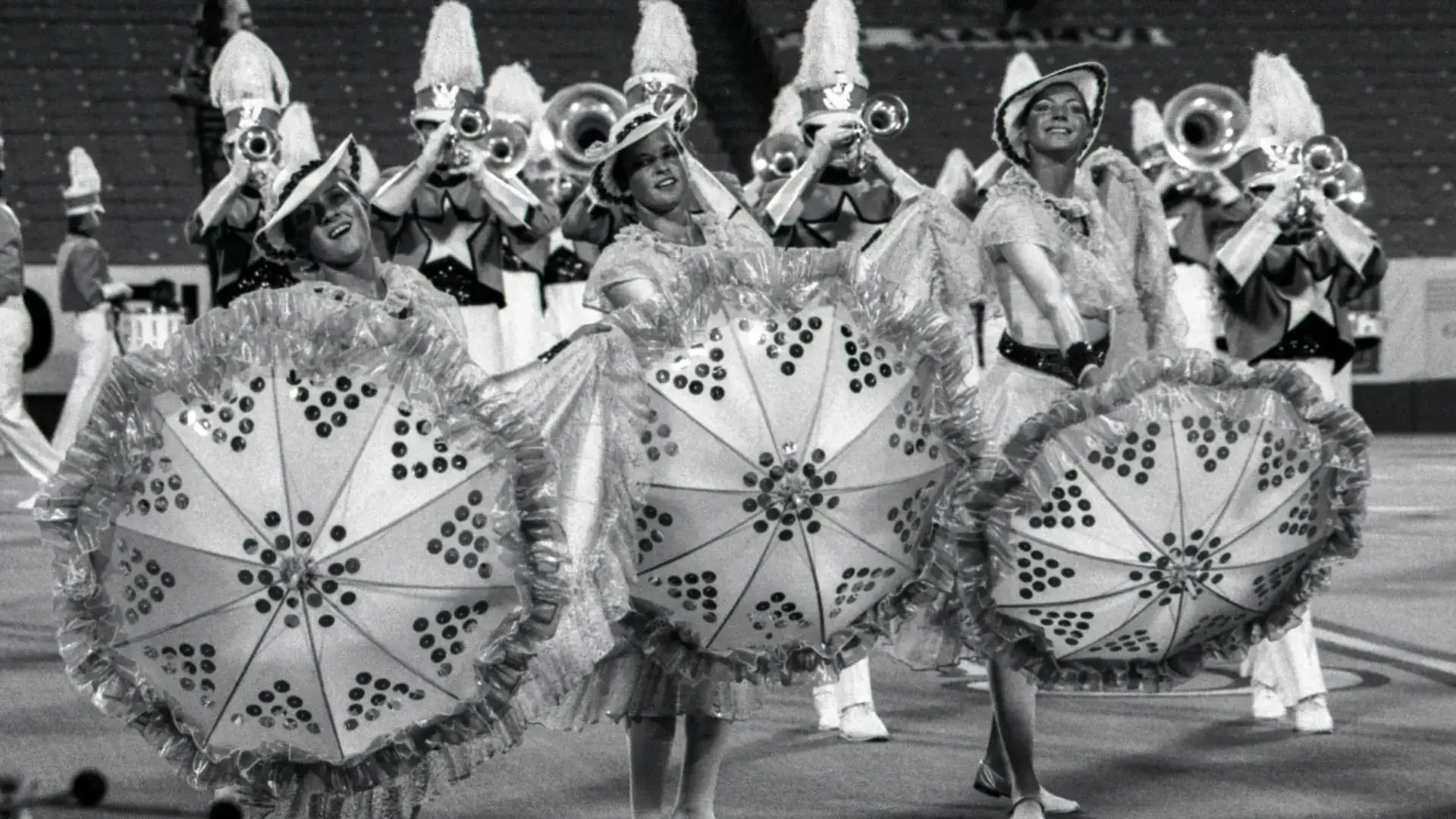Competition at the 1988 Drum Corps International World Championship Finals in Kansas City was tight across the scoreboard. Only two points separated the first-place Madison Scouts from the fifth-place Cavaliers, which was the smallest margin between first and fifth place in DCI Finals history. In between were Santa Clara Vanguard, Blue Devils, and the Garfield Cadets. The 12-point spread between first and 12th place was also the smallest margin in DCI Finals history.
Star of Indiana’s seventh-place show was based entirely on music from George Gershwin’s “Porgy and Bess,” perhaps the most popular American opera ever written. Gershwin finished the work in 1935, only two years before his untimely death from a brain tumor at the age of 38. During his all-too-brief lifetime, he wrote a continual series of pop hits and successfully branched into orchestral music with “Rhapsody in Blue,” “An American in Paris,” and “Piano Concerto in F.” He was also a top composer of Broadway musicals, with one of his lyricists being his brother Ira.
Ira and DuBose Hayward co-wrote the libretto to “Porgy and Bess,” which was inspired by Hayward’s 1925 novel, “Porgy.” The book was made into a successful play in 1927 that moved to London after playing Broadway for more than a year. The novel told the story of Porgy, a disabled African-American beggar living in a Charleston, South Carolina slum, and was noted for honestly portraying the black experience. Hayward’s empathy for Porgy’s physical condition may have been enhanced by his own battles with polio and typhoid fever. For the opera, George Gershwin created his own spirituals and folksongs, and as the music took the form of folk music, the Gershwins regarded their creation as a “folk opera.”
With Star of Indiana’s color guard members dressed as southern belles, the show opened with hurricane bells that in the opera ring as a massive storm approaches. Then, three members in the front ensemble percussion section performed the famous intricate xylophone feature from the opera’s opening “Overture.” The horns on the left side of the field formed the outline of a fish, a reference to the opera being set in the Charleston community of Catfish Row. The opener segued into “Oh, I Can’t Sit Down,” a joyous segment of the opera portraying residents of Catfish Row going to a picnic on a nearby island.
The ballad of “Summertime,” performed as a soprano bugle solo, started as an aria in the opera and soon became one of the most recorded songs in popular music history. (A columnist for the New York Times stated there are more than 25,000 different recordings of the piece.) Gershwin was so fond of the melody that he worked it into the opera five different times. The song, in its original format, conveys Gershwin’s grasp of both folk songs and the blues.
“The Fugue/The Hurricane” was extracted from the section of the opera known as “The Storm Approaches.” A constant flurry of notes and crashing metallic sounds in the front ensemble percussionists conveyed impending danger. A large round tarp carried aloft backfield was emblazoned with a swirl representing the formation of a hurricane. Tattered flags of blue and green were designed to give the impression of a storm surge swamping the land during the drum interlude.

“Bess, You Is My Woman Now” was the duet in the opera where the two title characters expressed their love for each other. During this section, Star’s color guard members brought out parasols to convey the more genteel nature of the song, replacing the violent upheaval of the prior storm segment.
The closer was taken from “O Lawd, I’m On My Way,” starting with a reprise of the xylophone feature from the beginning of the show.
A final statement of “Bess, You Is My Woman” concluded the show. As the brass players converged up front, triangular golden silks decorated with a star and rays of the sun were replaced with large blue flags. The round hurricane tarp was brought back and three long yellow banners were unfurled. These banners converged upon a triangular yellow silk placed over the hurricane tarp, pointing to a brighter, happier day for all.
1988 Overview

Michael Boo was a member of the Cavaliers from 1975-1977. He wrote about the drum corps activity for more than 35 years while serving as a staff writer for various Drum Corps International projects. During his lifetime Boo wrote for numerous other publications including an honors-winning book on the history of figure skating. He also was an accomplished composer. Boo passed away in 2020 and was inducted into the DCI Hall of Fame posthumously in 2021.





